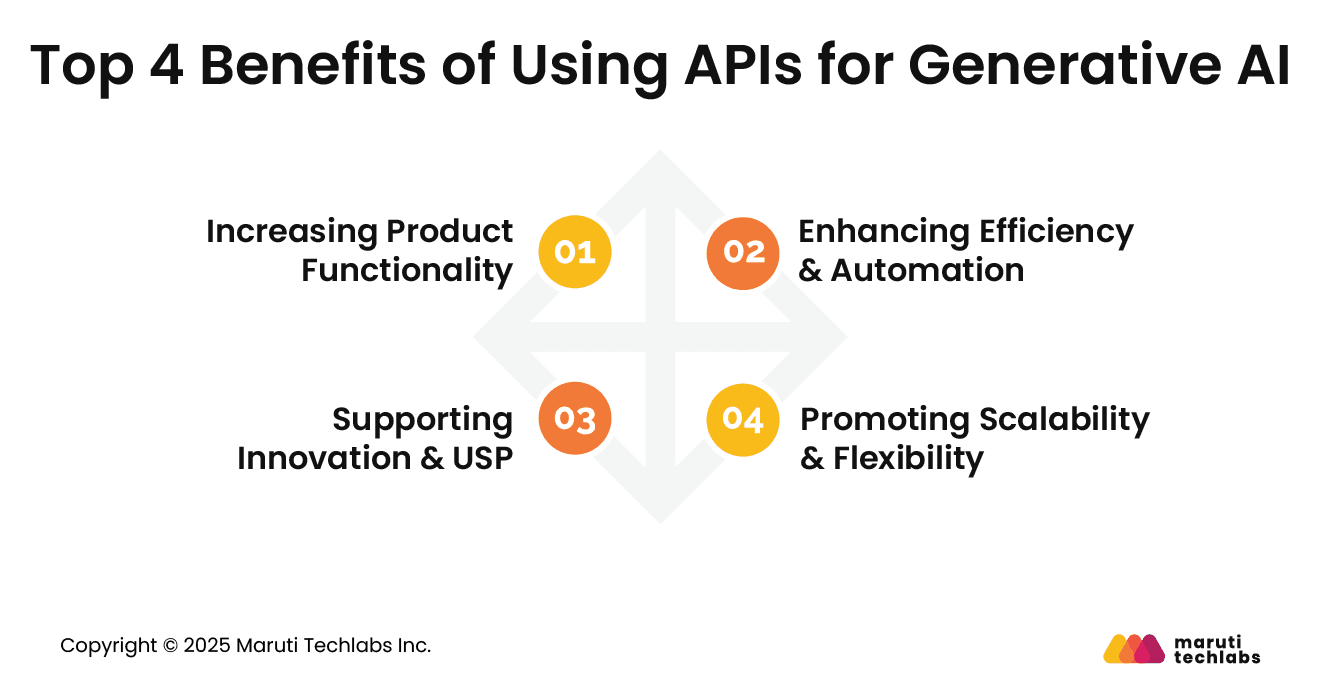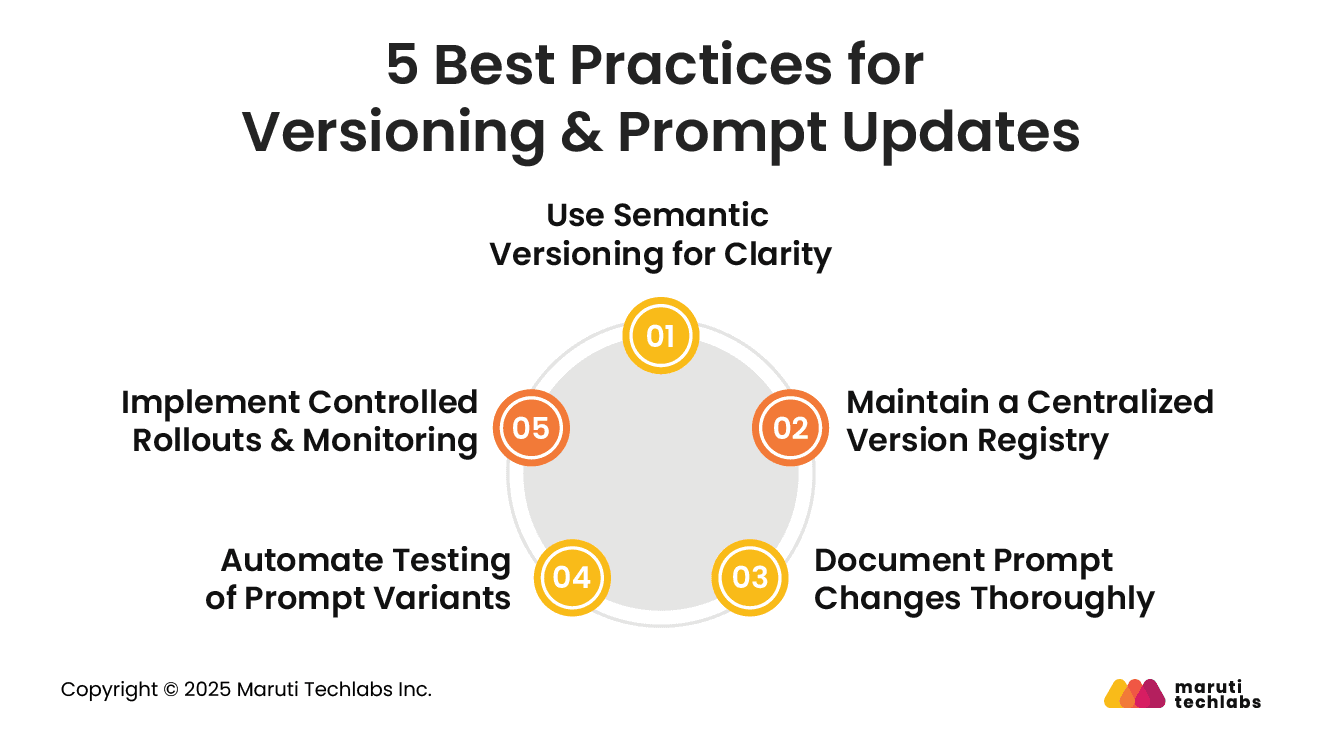

How to Securely Integrate APIs in your Gen AI Platform?






The advent of Generative AI (Gen AI) has revolutionized the way all industries operate. Services that previously required repetitive efforts and human intervention can now be completed in minutes, all at the tip of your fingers.
However, if you plan to build a Gen AI software, you must be aware of the challenges that come with it. This is because existing applications aren’t capable of integrating Gen AI directly.
You may have questions, such as where to start, how to minimize complexity, and how to enhance efficiency, among others. One can begin by integrating APIs to simplify processes and reduce uncertainties.
This article examines the advantages of utilizing APIs for Gen AI, including selecting the appropriate API, ensuring secure implementation in production, and monitoring and debugging.
APIs are becoming the backbone of modern Gen AI adoption, enabling flexibility, speed, and seamless integration.

Here are four reasons why organizations today are increasingly opting to leverage APIs for their Gen AI platforms.
APIs facilitate the inclusion of sophisticated features into products or services. This includes features such as voice recognition, advanced data analysis, and real-time language translation.
For instance, an eCommerce platform may choose to include an image recognition API to allow its customers to browse products using photos. This aids platform functionality and appeal.
Such integrations improve customer interactions, making the buying experience more intuitive and productive.
A report from Survey Monkey states that nearly half of customers (47%) share an interest in receiving personalized deals, while 42% value AI-driven product recommendations. Additionally, 52% of consumers are eager for AI assistance that enhances their experience with products, websites, or features.
APIs automate repetitive tasks, offering more time to perform strategic tasks. A Forbes Advisor survey reported that 64% of businesses expect AI to enhance their overall productivity.
For instance, machine learning APIs can reduce manual labour and errors, automating data entry and processing. This increases performance and operational efficiency across departments.
AI also processes data quickly and shares actionable insights. Machine learning API integration also fosters informed decision-making by analysing data in real time and performing predictive modelling.
Using APIs helps you integrate advanced features, giving you a competitive edge. For example, if you want to make a globally appealing application, you can equip it with a real-time language translation API.
You can set your product apart by offering compelling reasons to buy, such as features like automated content generation or predictive analytics. These APIs reflect your product's use of cutting-edge technology and innovation.
Such integrations position your applications as a leader in your domain, attracting tech-savvy customers who seek the latest technologies and advanced solutions.
AI APIs help enhance your product without needing extensive on-site development of AI capabilities. Technologies like Python support scalability, quick prototyping, implementing complex AI functions, and overall software development productivity.
This decreases your time to market, helping deploy innovative features faster. APIs fuel growth and innovation by incorporating evolving technological changes swiftly. For instance, machine learning APIs can enhance scaling operations by handling high volumes of data without compromising performance.
It’s crucial to have a scalable product or service that serves the growing customer demands, fostering growth and sustainability.
Here are the 3 most important API styles that you must know.
REST is the most widely used API style, known for being classic, clean, and straightforward, and is supported everywhere.
Built around HTTP methods and stateless communication, it organizes resources through readable and straightforward URLs like /users, /posts, or /orders.
Its stateless interactions make it easy to cache and scale, with broad adoption across web and mobile. REST is best suited for CRUD operations, public APIs, and standard backend services.
GraphQL, developed by Facebook, ensures you get precisely what you want, nothing more, nothing less.
It addresses the problem of over-fetching or under-fetching data by allowing a single query to shape results precisely, rather than hitting multiple endpoints.
With a single endpoint, declarative data fetching, reduced network overhead, and a strongly typed schema, GraphQL is best suited for complex frontend requirements, mobile applications, and custom dashboards.
gRPC, a modern high-performance framework by Google, is built for speed and efficiency.
Instead of JSON, it uses Protocol Buffers (.proto) for fast serialization and runs on HTTP/2 for multiplexed communication.
With features like bi-directional streaming, built-in authentication and deadlines, and language-agnostic code generation, gRPC is extremely fast and lightweight.
It is best suited for microservices, real-time communication, and large-scale inter-service communication.
Securing API endpoints is essential to safeguard access to AI models. Here are a few techniques that you can use to do it.
Vendors like Cloudflare and Google provide dedicated API security solutions for AI systems, offering capabilities such as automated rate control, anomaly detection, and DDoS defense optimized for machine learning workloads.
Let’s observe different business industries that have implemented Gen AI in their applications.
As an Artificial Intelligence Consulting company, we have observed that a significant number of AI projects fail due to a lack of model monitoring, biased data, and unauthentic outputs.
Here are a few techniques that you can use to introduce visibility in your AI models or tools.
One can only analyze model performance by tracing key metrics, like Perplexity for text models or Fréchet Inception Distance (FID) for image models.
With upgrades in real-world data, Gen AI models trained on static data sets can become outdated. To detect a shift in input data, one must use tools like AI, WhyLabs, or the like.
In the era of automation, human examination is still crucial. The quality of model-generated content is still verified by human annotators by renowned companies like OpenAI and Google.
Activation maximization helps learn the prioritized features of image models like GANs. Feature importance can be visualized using tools like Lucid and DeepDream.
You can try techniques like Grad-CAM and Integrated Gradients (IG) to understand how various inputs affect the model’s decisions.
By feeding adversarial examples, developers can identify vulnerabilities. For example, researchers have discovered that GPT models are susceptible to prompt injections, leading to unintended responses.
Consistent versioning and prompt management are key to maintaining reliable Gen AI performance over time.

Let’s explore the 5 best practices that you can follow for versioning and prompt updates.
Adopt semantic versioning (e.g., v1.2.0) to clearly distinguish between major, minor, and patch updates. This ensures teams can track changes precisely, identify breaking updates, and maintain compatibility.
A structured approach reduces confusion and makes collaboration across developers, data scientists, and product managers much smoother.
Keep all prompt versions in a centralized repository with metadata such as creation date, purpose, and author. This provides a single source of truth, prevents duplication, and makes it easier to roll back to previous iterations when newer prompts underperform or introduce unintended behavior.
Every modification should be documented with clear notes explaining why changes were made, what problem they solve, and their expected impact.
This history helps future team members understand evolution, improves accountability, and avoids repeating mistakes when updating or experimenting with prompt refinements.
Before rolling out prompt updates, run automated A/B or regression tests to evaluate performance against established benchmarks. This ensures improvements are measurable and avoids introducing regressions.
Automation reduces human error and speeds up the deployment cycle while maintaining reliability across different use cases.
Deploy new prompts gradually with feature flags or staged releases, monitoring user interactions and performance metrics closely.
Controlled rollouts limit risk, allow early issue detection, and provide data-driven validation before wider adoption. This practice balances innovation with stability in production environments.
Designing APIs to bring GenAI into existing applications requires careful planning and execution. By choosing the right APIs, ensuring secure implementation, and establishing strong monitoring and debugging practices, organizations can unlock GenAI’s full potential without compromising performance or safety.
Secure APIs safeguard sensitive data, while effective monitoring ensures ongoing reliability and scalability. Debugging tools streamline maintenance, making integrations more efficient over time.
Integrating AI Strategy & Readiness into API planning ensures that GenAI adoption aligns with organizational goals, governance, and operational readiness, maximizing both impact and sustainability.
Well-designed APIs serve as the bridge between powerful GenAI models and practical business applications, enabling companies to innovate, optimize processes, and deliver intelligent solutions that create measurable value in production environments.
Unlock the true potential of GenAI with Maruti Techlabs. Our experts design secure, scalable APIs tailored to your applications, ensuring seamless integration, reliable monitoring, and more brilliant innovation for your business growth.
Connect with us today to learn more about how APIs are the perfect solution for Gen AI applications.
Connect with us today to learn more about how APIs are the perfect solution for Gen AI applications. And if you’re unsure where to begin, try our AI Readiness Calculator to assess your organization’s preparedness for adopting Generative AI effectively.
Design APIs by starting with clear use cases and user needs. Define consistent endpoints, use REST or gRPC standards, and ensure scalability.
Prioritize security, documentation, and backward compatibility to support developers. A good design balances simplicity, usability, and long-term maintainability.
API management involves monitoring performance, enforcing security policies, controlling access, and applying rate limits. Use API gateways for traffic management and analytics.
Regularly update and version APIs while maintaining documentation. Effective management ensures reliability, improves developer experience, and protects against misuse or downtime.
Good API design emphasizes simplicity, consistency, and predictability. Use intuitive naming conventions, follow established standards, and provide clear documentation.
Prioritize security, input validation, and error handling. Ensure scalability, modularity, and backward compatibility so APIs remain robust, user-friendly, and adaptable as applications evolve.


